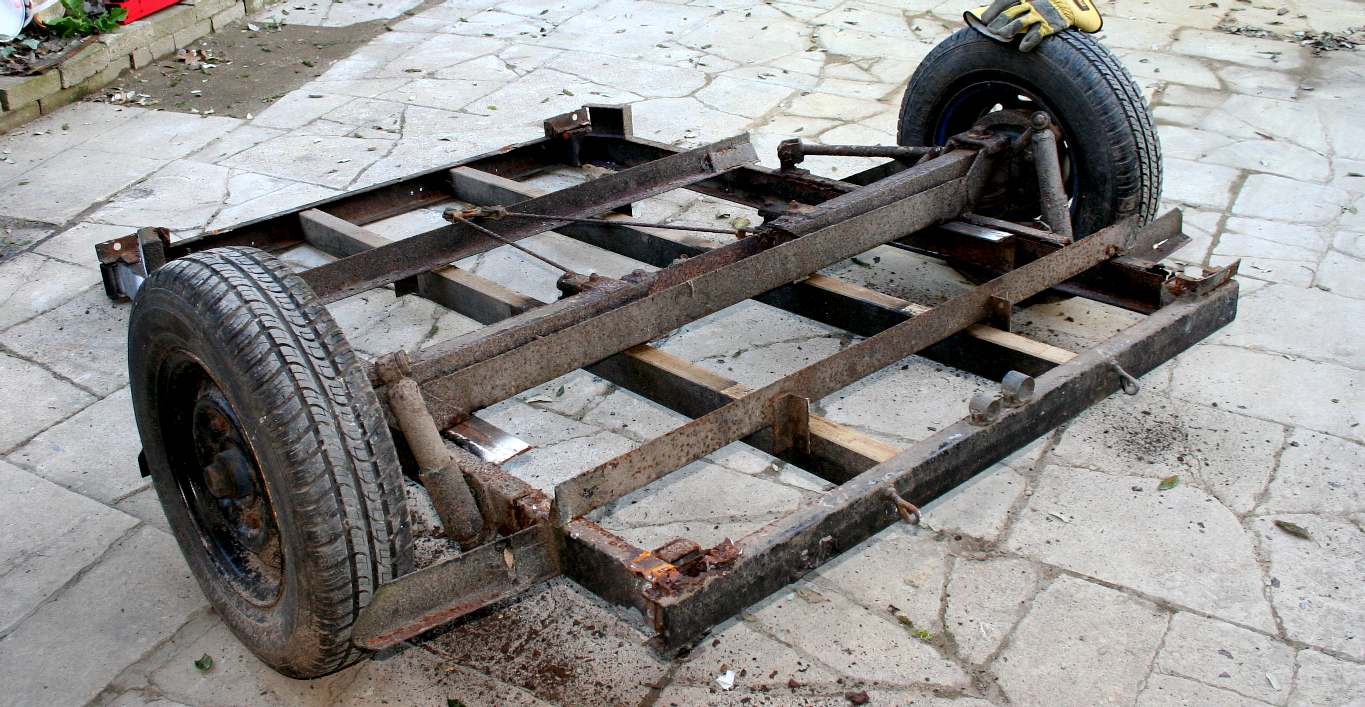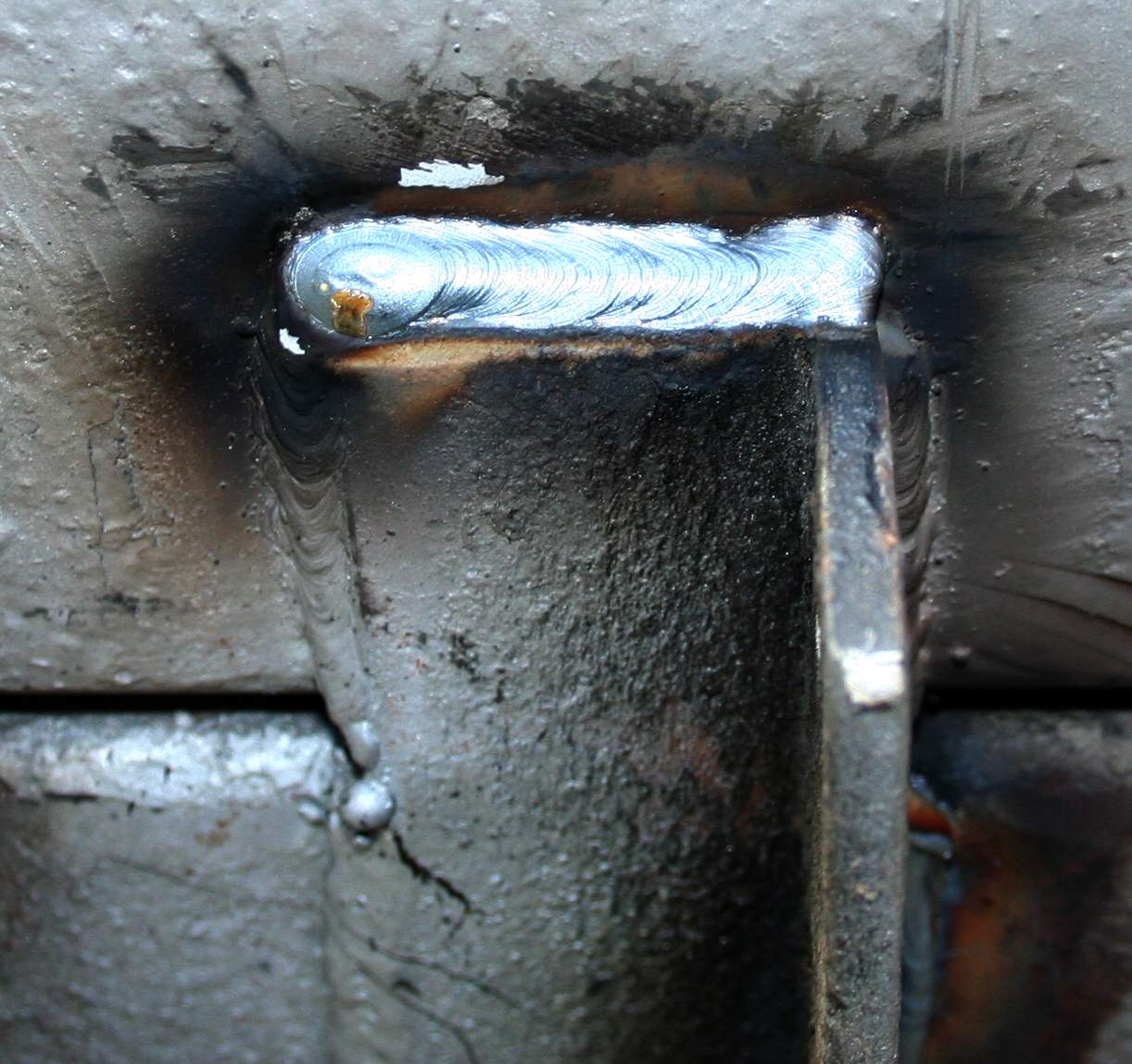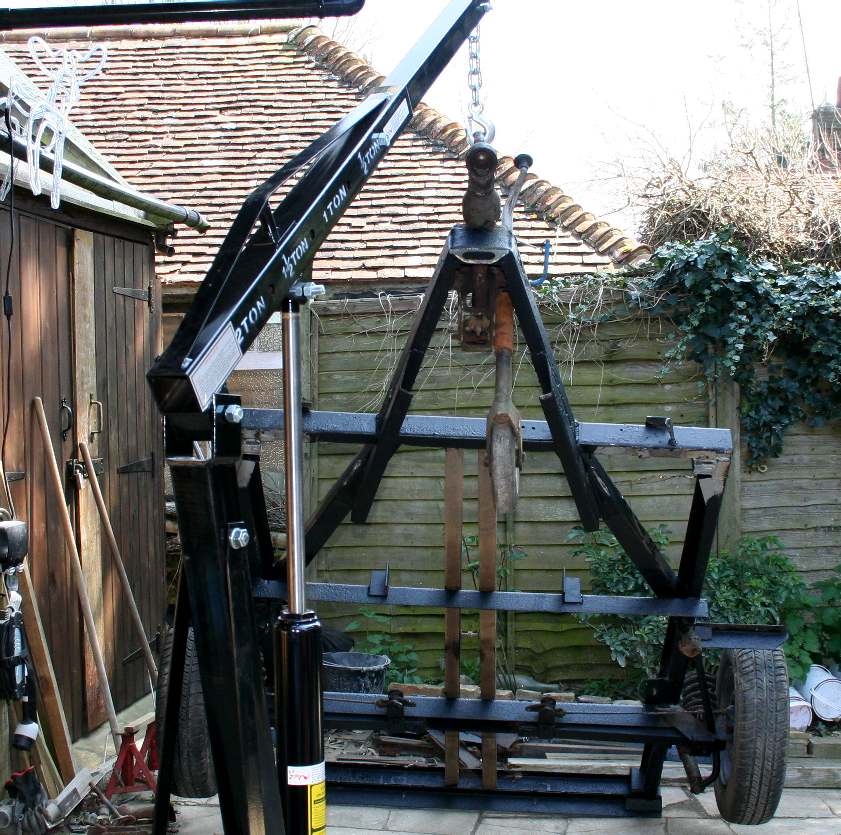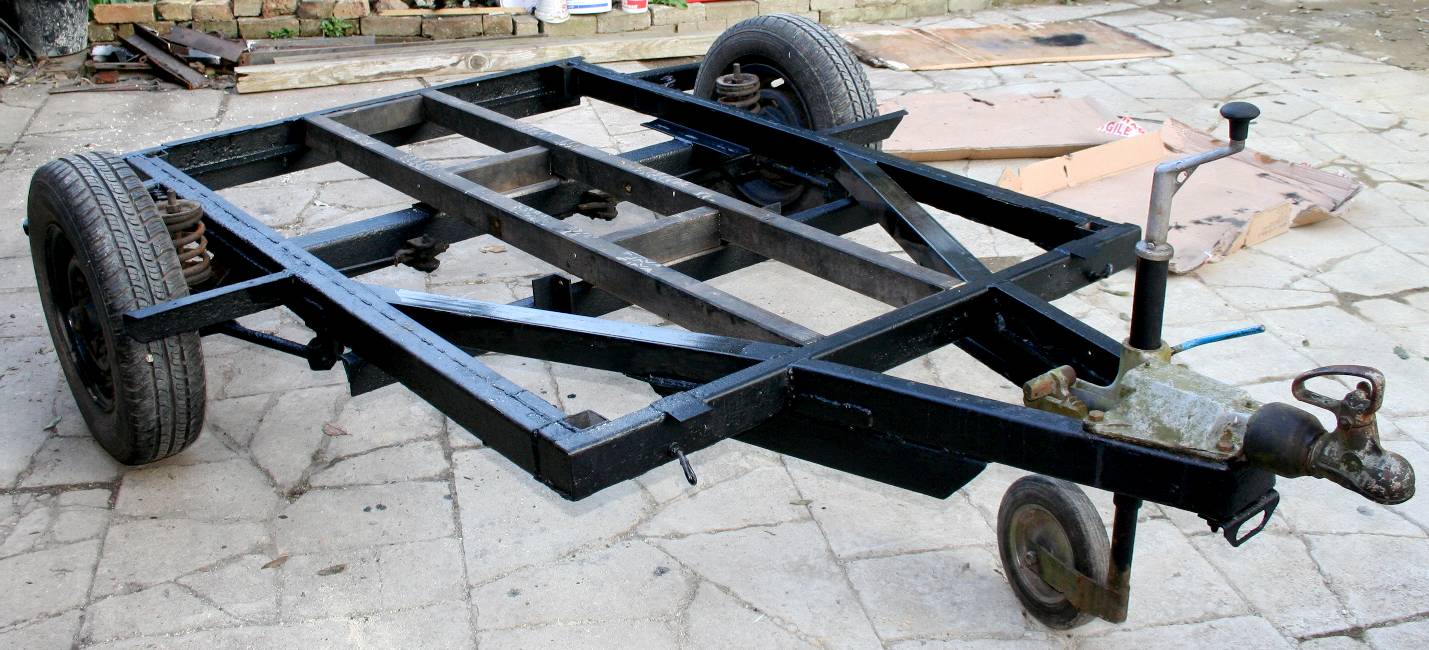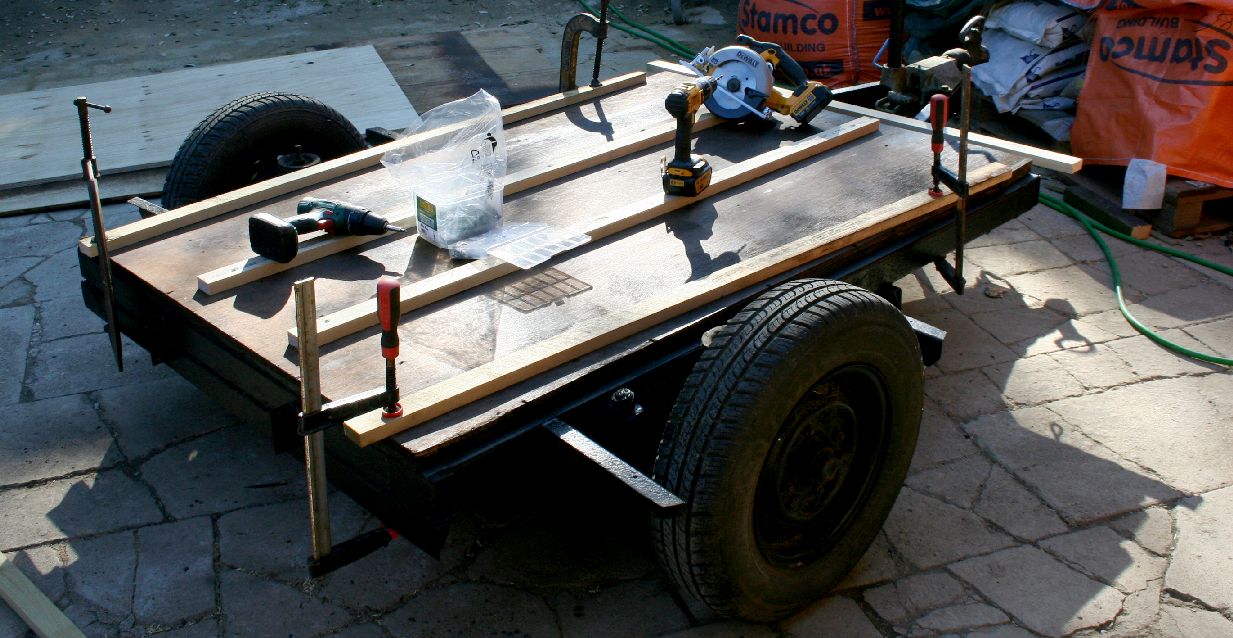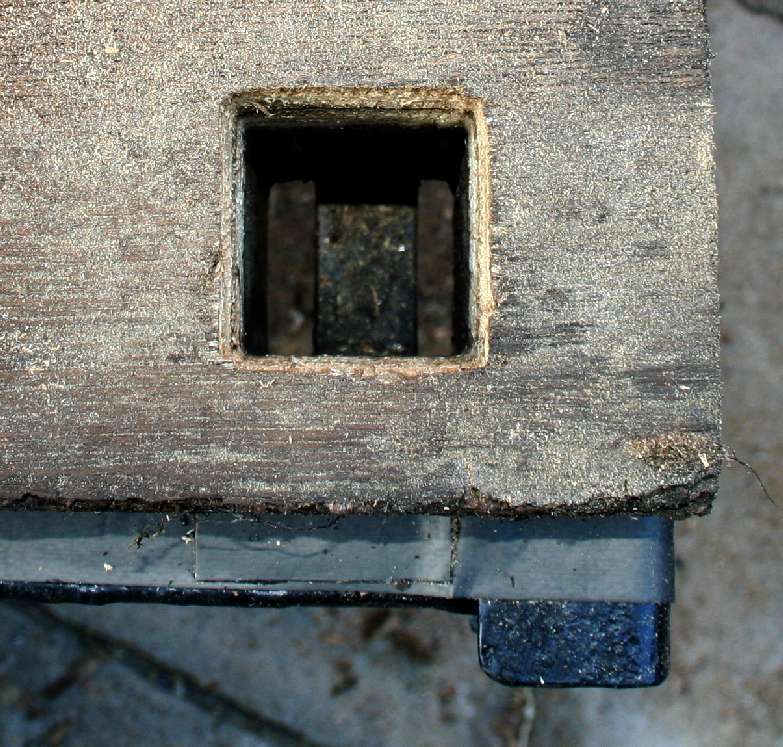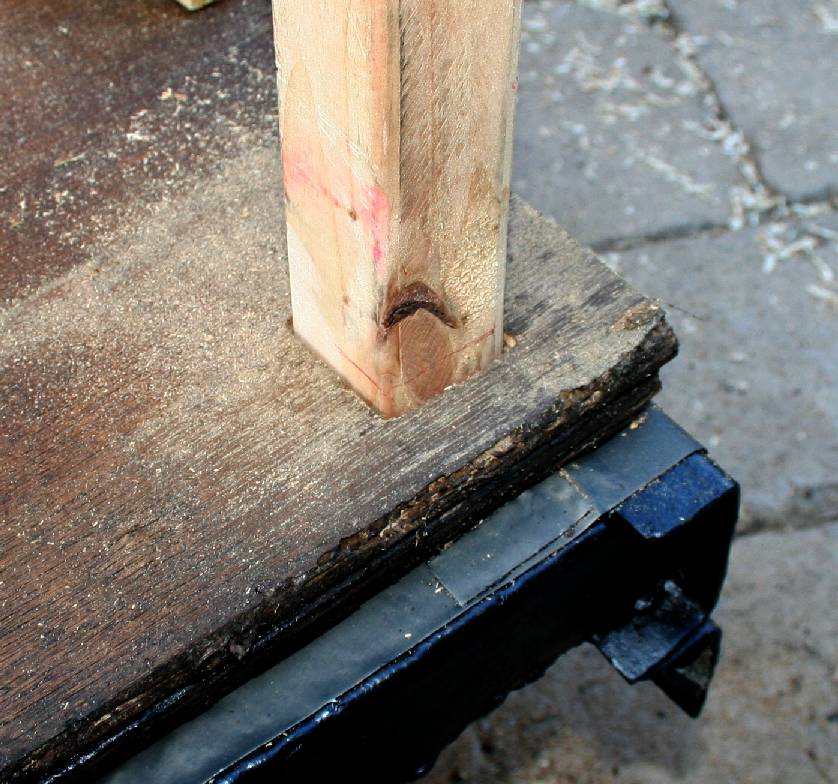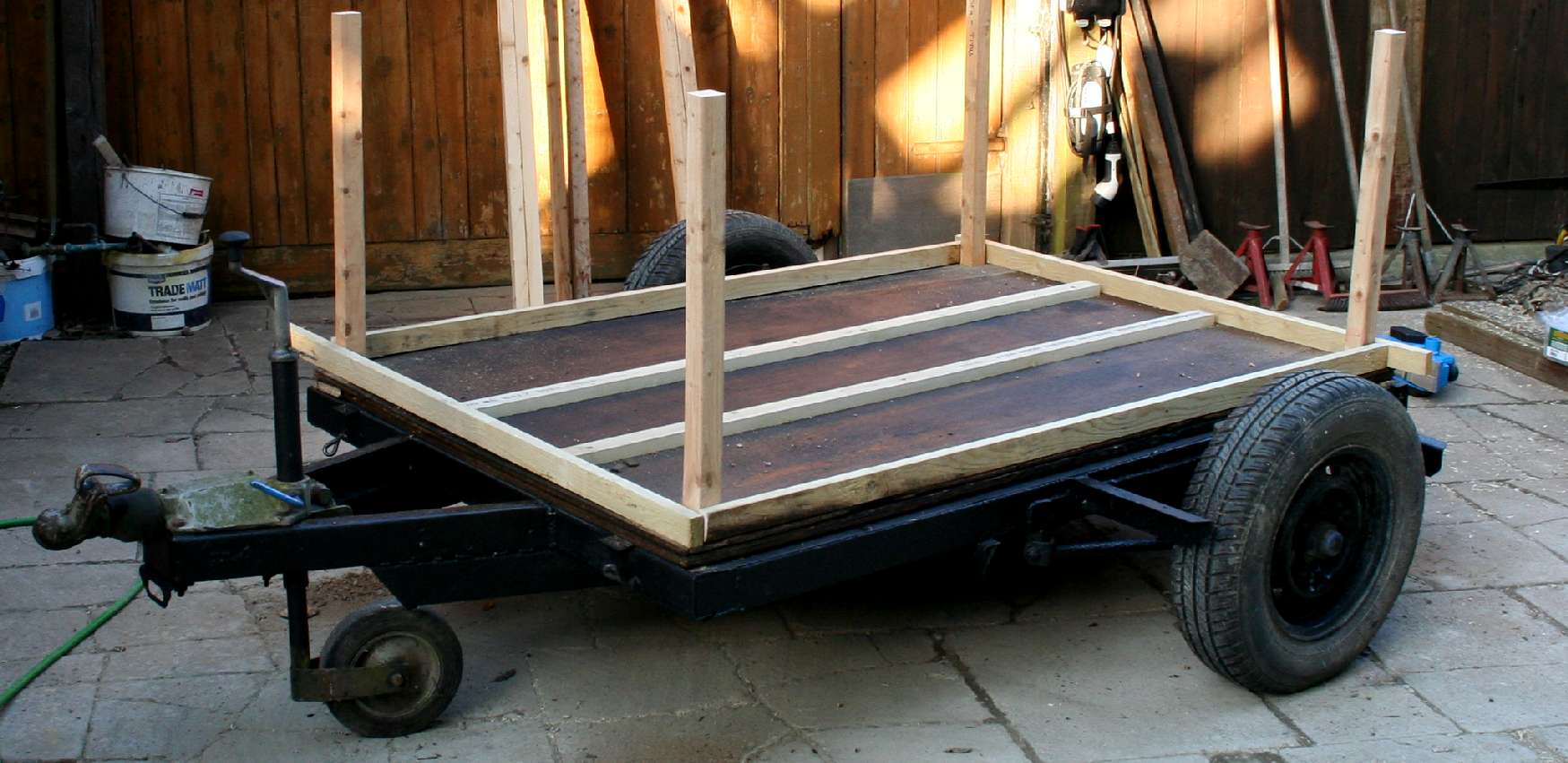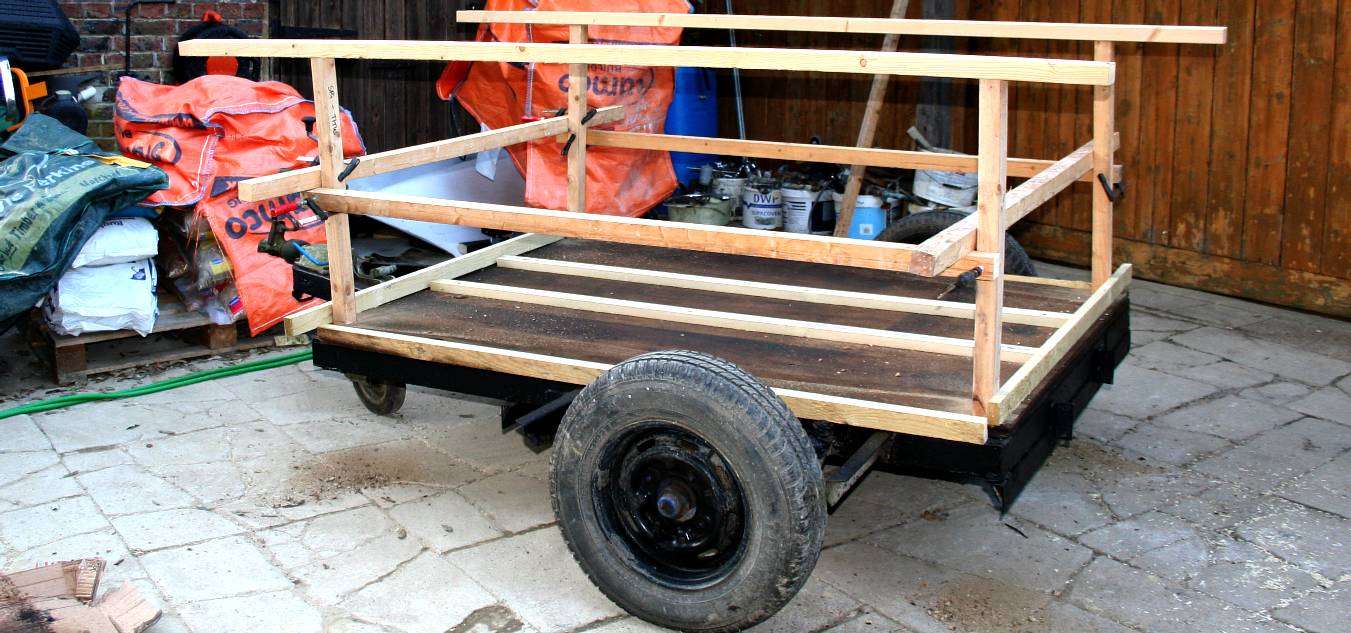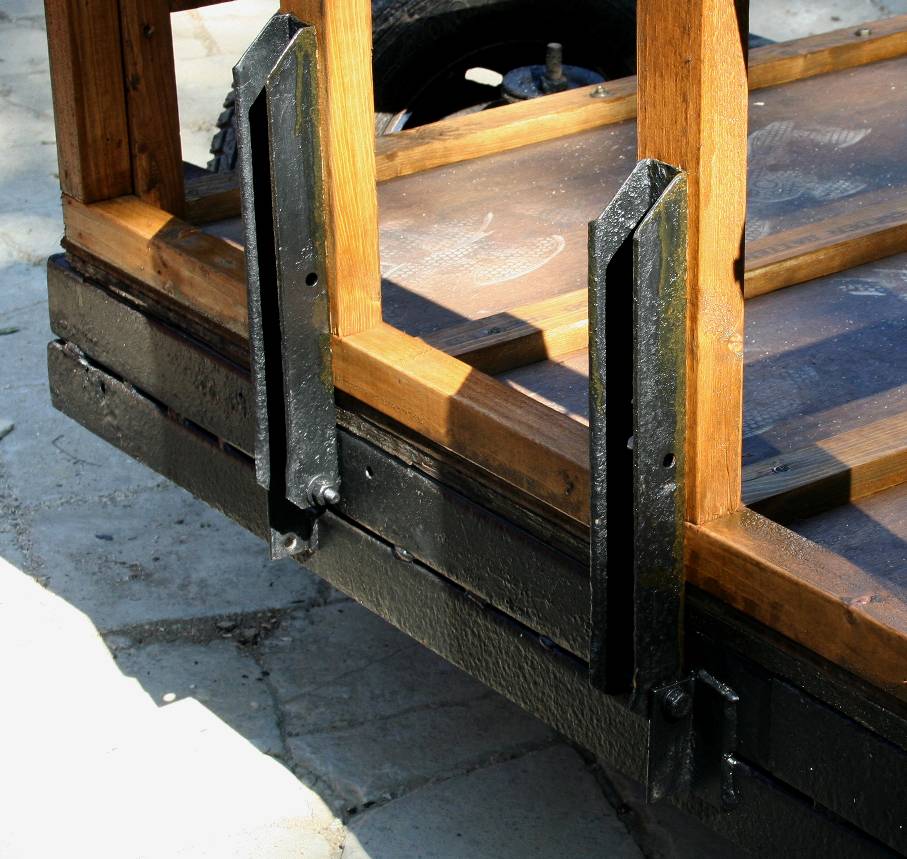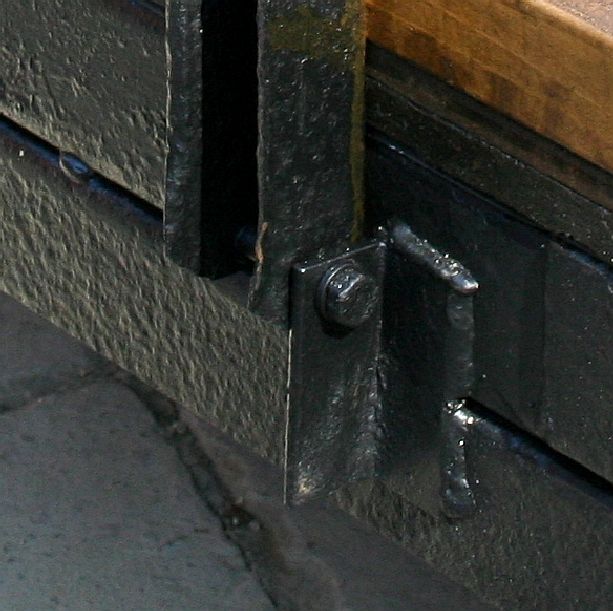|
CUSTOM ENGINE TRAILER
|
|
|
BROKEN BACK - This load of cement slabs finally did the old caravan chassis in after years outside in all weathers. As it is it is not only unsafe to transport heavy items, but also way to large for the job and difficult to store when not in use.
The SeaVax project continues on a reduced budget from April 2017, propped up by directors and trustee loans where they can see light at the end of the funding tunnel, and want to show willing.
We need a small trailer to move AmphiMax diesel engines from the workshops in Herstmonceux to the beaches some 10-15 miles away. This trailer started life as a small caravan that cost £200 about twenty years ago, second user. It has earned its keep as accommodation since then and was finally converted to a trailer in 1996/7, but can no longer be useful without some serious modifications.
MARKING OUT - The sections to chop out were marked with white line paint. As you can see there is a lot of rusty metal to remove. See the peppered steel section at the bottom of this picture. It's a miracle that the trailer delivered the slabs in this condition. Copyright © photograph, April 2017, all rights reserved. You will need the permission of Bluebird Marine Systems Ltd to reproduce these pictures.
We had to decide whether to order fresh steel and re-make the frame, or patch up what we had using steel chopped out and whatever we had in the workshops. Once the badly corroded sections were cut out we could use some of the good steel to repair - and in this case reinforce - the original frame. It would have been quicker to start from scratch, but money is tight at the moment and every penny counts. Plus, of course, we like recycling whenever we can to help save planet earth's resources.
We must though have the facilities to build the AmphiMax, and that in turn will give us the mobile boatyard that we need to build the SeaVax prototype in ratchet fashion. This little trailer is just one more step in the right direction to make things happen on the ocean cleaning front and is typical of the team's ingenuity. The conversion took 2 man days in total (16 hours), so about £160 in labour, but almost nothing in materials - save for welding consumables. A one ton trailer like this would have cost between £500 - 700 second hand. Or, £900 - 1,200 new and would not have had the break-down capability that is essential to us for storage purposes when not in use.
INVERTED - At this stage the frame looks fit for the scrap yard. The seriously shortened chassis is turned over to perform the welding operations on the underside. The marked sections have been cut out with a 2000 watt (2.6hp) 9" hand held angle grinder/disc cutter. Always wear leather gloves when using a large disc cutter and concentrate on the cuts. Welding to rusty steel is more demanding and will not produce even results because the rust patterns are not consistent. The suspension is single wishbone and coil springs with hydraulic shock absorbers and wheel-hub-shoe braking. Maybe a little advanced for a small trailer, but a good idea for a caravan with crockery onboard. Copyright © photograph, April 2017, all rights reserved. You will need the permission of Bluebird Marine Systems Ltd to reproduce these pictures.
WELDING EQUIPMENT
We are using the best industrial welding equipment that we could lay our hands on from R-Tech Welding Equipment. The first thing for our welders to get used to is that the torches are much heavier duty items compared to a lot of other DIY (and professional) garage equipment and the fittings are superb. Our engineers need production quality equipment for when we produce the AmphiMax and SeaVax machines. We have MIG and TIG machines in single and three-phase, and a spool on gun setup especially for aluminium and stainless steel. You'll see more details of these machines as we move ahead with the project.
WELDING FABRICATION - The frame was over-engineered with diagonal box section steel tubes welded in to direct acceleration and bracing forces to the axle from the hitch in a 'A' frame configuration. Another two rails were added under the original leading tubes to beef that up with extra brackets for the offsets that once welded in were angled with the disc cutter. Copyright © photographs, April 2017, all rights reserved. You will need the permission of Bluebird Marine Systems Ltd to reproduce these pictures.
R-TECH MIG - The digital inverter welders from R-Tech can be used in MMA or TIG mode, but here is fitted with a very good quality Eurotorch for MIG welding duties. On the left is a bracket that will carry the fold-down tailgate so that we can lift a diesel engine and roll the trailer underneath, then close up the tailgate. On the right we have joined a new steel tube to the old chassis rail. Copyright © photographs, April 2017, all rights reserved. You will need the permission of Bluebird Marine Systems Ltd to reproduce these pictures.
EASY LIFTING - Once the welding was completed and the trailer turned over, some of the chassis parts needed trimming on the underside, easy with this hydraulic hoist as our youngest team member enjoyed learning about mechanical advantage ratios. Copyright © photographs, April 2017, all rights reserved. You will need the permission of Bluebird Marine Systems Ltd to reproduce these pictures.
R-TECH INVERTERS
We used a 240 amp R-Tech inverter welding machine to customize this trailer using 120 amps for most of the joins, but should have ramped up the amps a little for smoother welds on the heavier sections. We'll need 450 amps and water cooling to weld some of the AmphiMax frame sections. We'll also use one of their plasma cutters to slice up the heavy steel sections where a disc cutter is not practical for heavier beams.
PRIMER - All good now structurally with two wooden 3" x 2" beams in between the steel chassis rails. The treated timbers are to support heavy point loads on the plywood floor or deck that is to be fitted next with screws and bolts: wood screws into the wood and 8mm steel bolts through the plywood and through the 6mm steel ledge or lip. The plywood deck is not going anywhere. Pound for pound wood is stronger than steel, but is difficult to weld : )
The whole frame was primed with a good quality propriety brand of rust converter. Before that a chunky wire cup was fitted to a 900 watt angle grinder from Lidl that tore through the solid rust flakes, taking the frame back to steel. Oxalic acid will continue to eat through steel once the process of oxidizing (rusting) has begun. The only way to stop that is to neutralize the rust chemically, or to get back to bright steel and prime, then paint - to prevent water from getting to the steel in the first place. Oiling or greasing parts also stops rust dead, but only for so long as the oil sticks. Rain washes oil away more quickly than grease, but modern paints protect for much longer, because they cannot be washed away. The weakness in paint systems is scratches from bumps or poor adhesion from incorrect preparation. Copyright © photograph, April 2017, all rights reserved. You will need the permission of Bluebird Marine Systems Ltd to reproduce these pictures.
PLYWOOD
DECK
- We used the old plywood deck, cutting off the rotted ends and added
another 12mm sheet on top that was ragged on the edges from weathering - from
an old building that was scrapped - so would have been useless for building.
Both sheets of ply were sprayed with our favourite Ronseal wood treatment.
Here you see the plywood being clamped down to the chassis for drilling. Copyright ©
photograph, April 2017, all rights reserved. You
will need the permission of Bluebird Marine Systems Ltd to reproduce this
picture.
CORNER
SLOTS - Slots in the plywood were cut directly above the steel box
sections that are welded into the chassis at all four corners. 50 x 50mm
wooden posts were then planed to a taper for easy insertion and later removal.
Copyright ©
photograph, April 2017, all rights reserved. You
will need the permission of Bluebird Marine Systems Ltd to reproduce this
picture.
UPRIGHTS
- Here is the platform with all four posts inserted and two 25x50mm centre
runners screwed through onto the 3x2" beams below. The runners will stop
the diesel
engines moving sideways during transit. Copyright ©
photograph, April 2017, all rights reserved. You
will need the permission of Bluebird Marine Systems Ltd to reproduce this
picture.
SHORT
BACK & SIDES - A good way to decide the height of your trailer sides
is to measure the items to be transported. We will be using this wagon for
other general duties such as taking steel waste to be recycled at our local
Ripley branch in Hailsham. Recycling metals and plastics are important stages
in any truly circular economy. The timbers for the sides were clamped into
position to visualize the trailer with a diesel engine onboard. Copyright ©
photograph, April 2017, all rights reserved. You
will need the permission of Bluebird Marine Systems Ltd to reproduce this
picture.
TAILGATE
- The tailgate must swing down to allow easy loading and unloading. Two of
the old caravan steady feet were cut and bolted to the brackets welded in
place earlier. The 'U' section legs were then screwed to the tailgate
uprights. Copyright ©
photograph, April 2017, all rights reserved. You
will need the permission of Bluebird Marine Systems Ltd to reproduce this
picture.
BOX
TRAILER - The wooden frame is demountable from the flatbed chassis. By
simply undoing eight heavy duty 150mm (6") steel screws with toggle
handles. The four wooden corner posts slot into steel tubes that are welded
into the chassis corners as you have seen above, so are easy to remove. Having plywood sides,
front and back, means that we can use this
trailer to carry loose items to and fro, without having to worry too much
about spilling the contents onto the road. We can rope engines in place using
the timber rails higher up. Copyright © photograph, April 2017, all rights reserved. You
will need the permission of Bluebird Marine Systems Ltd to reproduce these
pictures.
JEEPEY - This Jeep Cherokee will tow our AmphiMax diesel engines to the beach once they are checked over and serviced. For this we need a reliable trailer. Jeepey also needs a bit of attention at the moment, some sills, and more importantly, winches that can handle heavy loads on rough terrain. Copyright © photograph, April 2017, all rights reserved. You will need the permission of Bluebird Marine Systems Ltd to reproduce these pictures.
TRAILER LINKS & REFERENCE
http://www.trailers.co.uk/ http://pronar-uk.co.uk/products-greenland-trailers http://www.freeads.co.uk/uk/buy-sell/motors/trailers/ http://secondhand-trailers.co.uk/ http://www.r-techwelding.co.uk/
|
|
|
Click the links on this page or see our SITE INDEX to navigate this site. Copyright © April 2017 Cleaner Oceans Foundation.
|


